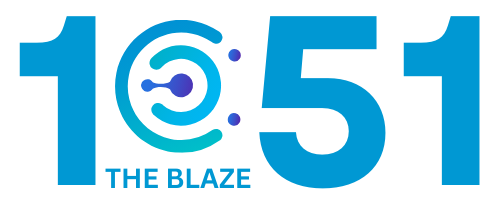
Share Post:
Applying for international jobs? Don’t hit “submit” just yet.
A CareerBuilder survey found that 77% of resumes are rejected due to simple errors like typos or wrong formats. And when applying abroad, those mistakes get amplified.
Different countries have different rules about language, document types, and even photo use.
One wrong move can cost you an interview.
This checklist will help you avoid the most common and costly mistakes. Let’s make sure your application stands out for the right reasons.
Table of Contents
ToggleKnow the Difference Between a Resume and a CV
A common reason international applications fail is confusion between a resume and a CV. Employers expect the correct document based on their location.
Resume vs CV: Key Differences
Feature
Resume
CV
Length
1 to 2 pages
2 pages or more
Purpose
Focused on a specific job
Covers full academic and career history
Used In
United States, Canada, Australia
Europe, UK, New Zealand, South Africa
Content
Relevant skills and achievements
All work, education, and research
In countries like the United States or Canada, a resume is standard. In Europe and many other regions, employers expect a CV. Sending the wrong one can result in immediate rejection.
A 2023 TopCV survey reported that 68 percent of recruiters discard applications with the wrong document format.
Use the Right Language and Localize Your Content
If a job ad is written in a specific language, your application should match it. Submitting an English resume for a job posted in Spanish or German reduces your chances of getting noticed.
According to a 2024 EF study, international employers are 40 percent more likely to shortlist applications written in the language of the job posting.
Localization goes beyond language. It includes spelling conventions, date formats, and even vocabulary.
To get it right, many professionals rely on expert localization services to ensure their documents align with regional expectations and cultural nuances.
For example:
Element
US English
UK English
Spelling
“Organize”
“Organise”
Date Format
MM/DD/YYYY
DD/MM/YYYY
Vocabulary
“Resume”
“CV”
Job Title Example
“Project Manager”
“Programme Manager”
If you’re unsure about accuracy, consider using a professional document translation service. It ensures the language is correct and the tone matches business norms in that region.
Quick Check
Mistakes here can signal carelessness or a lack of readiness for the market.
Tailor Your Resume and Cover Letter to the Role

Most resumes are ignored because they are too general. Recruiters look for clear evidence that you meet the job requirements.
Start by reading the job description line by line. Pull out keywords and required skills. Use these in your resume naturally. Applicant tracking systems rely on this match to filter candidates.
What to Adjust in Each Application
Focus Area
Action Needed
Keywords
Use exact terms from the job ad
Work experience
List only relevant roles and projects
Achievements
Quantify results with numbers
Cover letter
Address the company by name
Do not recycle the same application for multiple roles. Take time to edit each one. This signals attention to detail and real interest in the position.
Be Transparent About Your Visa and Language Status
Many candidates hide their visa situation or exaggerate their language skills. Employers often find out during interviews or onboarding. At that point, the damage is done.
If the job requires sponsorship, say so in the cover letter. If you already have work authorization, list it clearly in the header or a separate section of your resume.
The same goes for language proficiency. Avoid vague labels like “fluent” unless you can back them up. Use standardized levels like CEFR (A1 to C2) or IELTS scores.
Example of a Clear Format
Detail
Example
Work authorization
Valid Schengen work visa until 2026
Languages
English (C1), French (B2), Mandarin (native)
Willing to relocate
Yes, within 30 days
Transparency speeds up the screening process. It also signals that you understand the legal and practical steps involved in working abroad.
Follow Country-Specific Requirements
View this post on Instagram
A post shared by Resume Janus | Career Solutions | Resumes, LinkedIn & Branding (@resumejanus)
Every country has unique expectations for job applications. Ignoring them is one of the fastest ways to get rejected.
In the United States, resumes should never include a photo or personal details like age or marital status. In Germany or France, a photo is often expected. In Japan, handwritten forms are still common for some roles.
Key Differences by Country
Country
Photo Required
Personal Info Expected
File Format
United States
No
No
PDF
Germany
Yes
Sometimes
PDF
Japan
Sometimes
Yes
Word or print
UK
No
No
PDF
Other details also vary. Some countries expect CVs to be signed and dated. Others include GPA, references, or converted grade systems.
Before you submit, check:
Skipping these checks can lead to instant disqualification. The more aligned your documents are with local standards, the easier it is for recruiters to say yes.
Proofread and Review Every Section Thoroughly

Typos and formatting errors can disqualify you before a recruiter reads your experience. In international applications, precision is non-negotiable.
A 2023 study published on arXiv found that using grammar assistance on resumes led to an 8 percent increase in hiring probability in online job platforms.
What to Check Before You Submit
Area
Review Task
Spelling
Use a grammar tool like Grammarly
Grammar
Read aloud to catch awkward phrasing
File names
Keep it clear and professional
Formatting
Align margins, font size, and spacing
Consistency
Match job titles, dates, and punctuation
Ask someone else to review your materials. Errors are easier to spot with fresh eyes, especially when applying in a second language.
Double-Check the Application Instructions
Many applications fail because candidates overlook basic directions. Missing attachments, wrong file formats, or skipped questions can result in instant rejection.
Recruiters filter fast. If an employer asks for a PDF and you upload a Word file, your resume may never get opened.
Common Mistakes to Avoid
Instruction Type
Typical Requirement
What Often Goes Wrong
File format
PDF
Uploaded as .docx or .pages
Required documents
Resume, cover letter, portfolio
Missing one or more attachments
Submission channel
Email or portal
Sent to the wrong address or platform
Deadline
Specific date and time
Submitted late or in the wrong timezone
Quick Checklist Before You Submit
Small errors here show a lack of attention. Avoid rushing and review everything twice.
Clean Up Your Online Presence

Recruiters often search your name before deciding to move forward. What they find can help or hurt your chances.
According to a 2024 ResumeBuilder survey, 54 percent of hiring managers said they have rejected a candidate based on social media content.
What Employers Look For
Platform
What to Review
LinkedIn
Match resume details, use a professional photo
Instagram
Remove public posts that appear unprofessional
Facebook
Check privacy settings and content
Twitter/X
Avoid controversial or offensive content
Even if your resume is solid, an unprofessional digital footprint can override it. Recruiters look for alignment between how you present yourself online and how you appear on paper.
Track Your Applications
When applying to multiple roles, it’s easy to lose track of where you’ve applied or when to follow up. Poor organization can result in missed deadlines or duplicate submissions.
A simple spreadsheet can solve this. It also helps you see patterns in where you’re getting responses and where you’re not.
Sample Tracking Sheet
Company Name
Job Title
Date Applied
Status
Follow-Up Date
ABC Corp
Marketing Manager
June 10
Submitted
June 17
XYZ Ltd
Content Strategist
June 12
Interviewing
June 19
Delta Group
UX Designer
June 14
No Response
June 21
Columns to Include
Using a tracking system helps you manage deadlines and follow-ups without missing steps. It also improves your focus during the job search.
Conclusion
How to get a job in 10 steps.
1. Create an excel sheet and fill it up with at least 200 companies, links to their career page, and also their LinkedIn.
2. Write your CV in about 10 formats to suit different industry styles. – don’t submit one CV for 500 roles.
3. Look for… https://t.co/njOCSOz7ea
— Name cannot be blank (@hackSultan) November 14, 2023
International job applications require more than just a good resume. You need accuracy, localization, and awareness of regional norms.
In a modern world shaped by AI tools and automated screenings, small mistakes can cost big opportunities.
Each step on this checklist helps reduce errors and improves your chances of landing interviews. Take the time to get it right—employers will notice.








